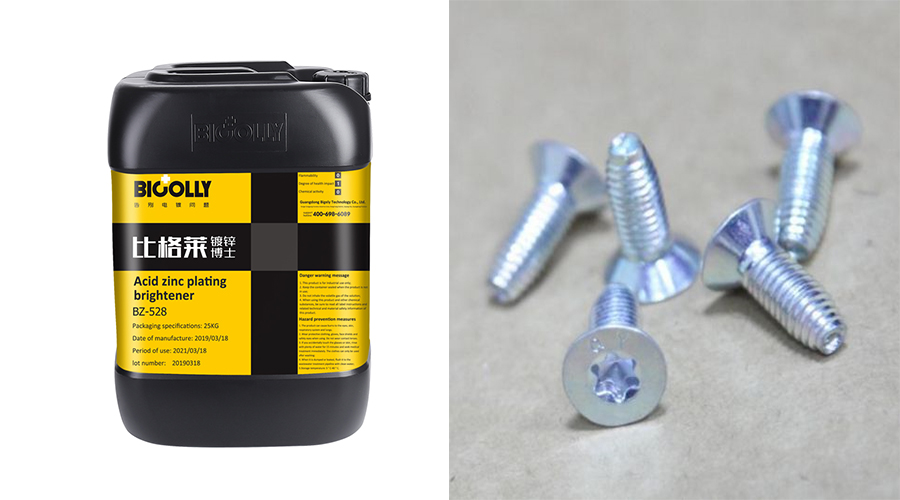
In the process of using acid zinc plating brightener, sometimes we find that the coverage of the zinc coating of the produced workpiece is poor, especially if the coating is thin or there is no coating in the blind hole or recess of the workpiece, what is the cause?
Bigolly Technology has made an analysis based on the field experience and the characteristics of the product acid zinc plating brightener BZ-528. The main four points are as follows:
1. The content of potassium chloride (or sodium chloride) in the bath is too low. In acid zinc plating bath, when the content of potassium chloride (or sodium chloride) is too low, the dispersibility and deep plating ability of the bath will obviously decrease, and the range of bright current density will be narrowed. Therefore, the plating solution using brightener BZ-528 should periodically analyze the potassium chloride (or sodium chloride) content in the plating solution and control it within the process range.
2. The bath temperature is too high. When the temperature of the plating solution is too high, the absorption of the brightener is weak, and the brightness, dispersion performance and deep plating ability of the workpiece coating will be significantly reduced. Therefore, the temperature of the plating solution should be controlled during the production process. When the temperature of the plating solution is high, production should be suspended or cooling measures should be adopted to reduce the temperature of the plating solution.

3. Insufficient brightener in the plating solution. Brightener is able to produce brightness and leveling. When the brightener in the plating solution is insufficient, the brightness and leveling of the coating will become worse. Therefore, when making the brightener BZ-528 plating solution, the Hull cell should be used regularly to determine the amount of brightener in the plating solution to ensure that the amount of brightener in the plating solution is within the process range.
4. The influence of lead impurities. Lead impurity mainly comes from impure zinc chloride or zinc anode. Lead impurity mainly affects the low area of the coating, leading to streaks or missing plating in the low area of the coating. When there is the influence of lead impurities in the plating solution, it should be determined by the Hull cell experiment first, and then zinc powder treatment or small current electrolysis treatment should be used in time.
Therefore, when we use acidic zinc plating brightener in the process of poor coating coverage, we can eliminate the fault in time through the above 4 points to reduce the loss caused by the fault. If you are interested in acidic zinc plating brighteners, please contact Bigolly customer service for free samples and detailed technical information!